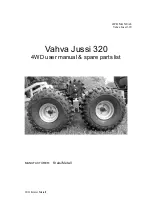
Safety Procedures
To avoid possible electric shock or fire, observe the following:
Read the following information carefully before using or servicing the instrument.
Adhere to local and national safety codes.
Individual protective equipment must be used to prevent shock and injury.
Use of instrument in a manner not specified by the manufacturer may impair safety
features/protection provided by the equipment.
Avoid working alone.
Inspect the test leads for damaged insulation or exposed metal. Check test lead
continuity. Damaged leads must be replaced. Do not use the meter if it appears damaged.
Use care when working above 30V ac rms, 42V ac peak and 60V dc. Such voltages pose
a shock hazard.
When using the probes, keep fingers away from probe contacts. Keep fingers behind
the finger guards on the probes.
Measurements can be adversely affected by impedances of additional operating
circuits connected in parallel or by transient currents.
Verify operation prior to measuring hazardous voltages (voltages above 30V ac rms, 42V
ac peak and 60V dc).
Do not use the meter with any of the parts removed.
Do not use the meter near explosive gas, vapor, or dust.
Do not use the meter in a wet environment.
Meter Description
1.
L1 test Lead input to meter
2.
L3 test lead input to meter
3.
L2 test lead input to meter
4.
L1 status LED
5.
Orientation symbol for non-contact testing
6.
L3 status LED
7.
L2 status LED
8.
Power ON status LED
9.
ON button
10.
Left/Right Clockwise/Counter-Clockwise status LEDs
11.
Test lead alligator clips























